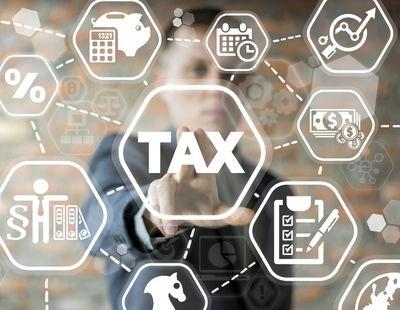Capital gains tax is a triple threat to investors.
If their investments outside of tax wrappers keep up with inflation, they’ll be taxed on anything over their annual allowance when they sell up, seriously denting their ability to keep pace with inflation. To make matters worse, the slashing of the allowance to the lowest level in over 40 years means inflation has pushed ever-larger slices of the gain into the realms of tax. And because income tax thresholds have been frozen, more of them will pay a higher rate of CGT into the bargain.
The last year we have figures for was 2021/22, when a record £16.7 billion was paid in capital gains tax. This is more than twice as much as the record inheritance tax we paid in 2022/23, of just over £7 billion, which far more people are concerned about. To make matters worse, the cuts in the CGT thresholds in 2023/24 and 2024/25 mean we could pay even more eye-watering levels of this tax in the coming years.
The tax on inflation – back to the 1970s
The fact that there’s no indexation means it’s not just the real gains being taxed – but inflation too. It takes us back to the bad old days of the 1970s, when Sir Geoffrey Howe called CGT without indexation “a capricious, and sometimes savage, levy on the capital itself.”
Anger at this situation led to the introduction of indexation, which ran from 1982 to 1998 and effectively accounted for inflation. Gordon Brown replaced it with taper relief, which didn’t match inflation, but rewarded you for holding assets for longer. At the time, he argued that in a low inflation environment, accounting for inflation wasn’t necessary. That low inflation environment seems a long way in the past now. In 2008, taper relief was axed too, so there’s no relief on the gain beyond the allowance.
The allowance goes back to the 1980s
The slashing of the CGT allowance in April will push us back to the level we had in the early 1980s, and 40 years have had a dramatic impact on the value of our money –£3,000 back then had the buying power of more than £15,000 today.
The price of wage inflation
Wages are up 7.3% in a year. Of course, in reality, when you take inflation into account, the buying power of regular pay only rose 1.4%, which has a long way to make up for earlier catastrophic falls in the buying power of our wages. However, because the tax thresholds have been frozen, the taxman takes no account of inflation. It means more people will cross the threshold into paying higher rates of tax. In the current tax year there are 5.6 million higher rate taxpayers – up 41% in just three years. Once they become higher rate taxpayers, among the many extra costs they face is that any capital gains will be taxed at 20% - or 28% for residential property.
Why this matters
It always matters that we may have to pay a huge chunk of tax on money we’ve carefully invested over the years. In this environment it’s particularly galling, because you may end up with a tax bill even if all your investments have done is kept pace with inflation. It’s also going to create problems in the coming years.
As people make investment decisions, and choose whether to sell or hang onto an asset, CGT could distort their decision-making, and persuade more people to sit on their gains, instead of taking profits and reinvesting as part of sensible portfolio management. It is also likely to encourage hoarding of assets until death – when CGT is effectively returned to zero. The capital gains tax regime needs to encourage good long term investment behaviours and so needs to provide more scope for realising profits.
It makes sense to take advantage of this year’s CGT allowance if you can. If you’re sitting on gains outside an ISA or pension, you can use the Bed & ISA process to make a gain of up to £6,000, and pay no CGT. If you haven’t used your ISA allowance yet this year, you can move up to £20,000 of the assets into an ISA wrapper, so you don’t have to worry about tax on gains (or the income) on these investments ever again. Investment companies will offer share exchange and Bed & ISA services to make this process easier.
If you’re married or in a civil partnership, you can transfer the ownership of some assets to your spouse or civil partner. There’s no CGT to pay on the transfer. When they sell up, there may well be tax to pay, and the gain will be calculated by comparing the cost on the day of selling with the day when their spouse originally bought the asset. However, they have a CGT allowance of their own to take advantage of, so a chunk of the gain won’t be subject to tax. If they’re taxed at a lower rate, they may also pay any CGT at a lower rate too.
You should also consider dividend tax when realising gains and moving assets into an ISA. The tax allowance for this is also being cut from £1,000 to £500 in April - and many people choose to prioritise moving income-producing assets into the ISA, because income tends to be taxed at a higher rate and can’t be planned for in the same way as a capital gain.”
Sarah Coles is head of personal finance at Hargreaves Lansdown:
We're excited to announce that we're working on building a shiny new website for readers of Landlord Today! As part of this process, commenting on articles will be temporarily disabled. We look forward to sharing our new and improved Landlord Today website with you shortly!








.png)

(1).png)







.jpg)



